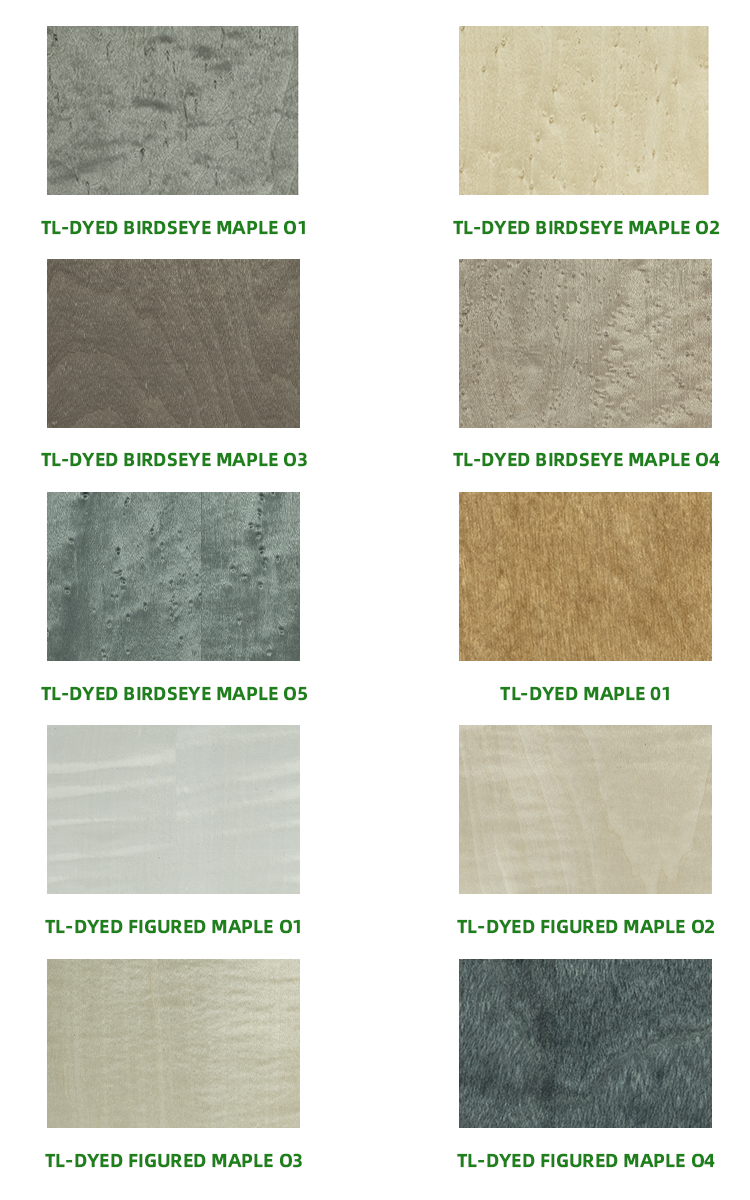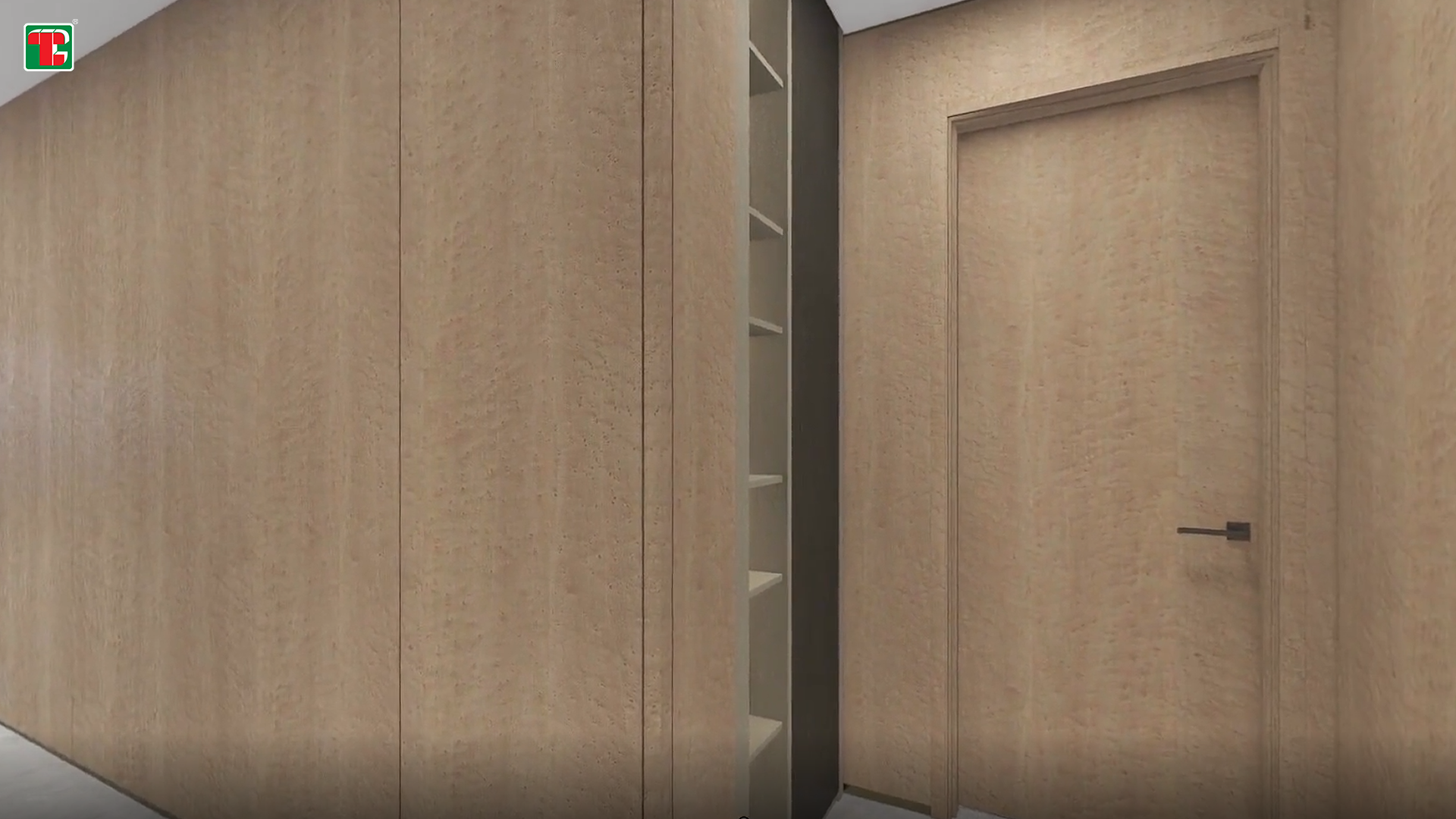Birdseye Maple, derived from its unique "bird's eyes" pattern, is an exquisite and rare form of maple trees, scientifically known as Acer Saccharum. Belonging to the Sapindaceae family, this distinct wood species has gained popularity for its unmatched features that cannot be replicated by human hands.

Uses of Birdseye Maple
Birdseye Maple is a versatile wood known for its distinctive grain pattern and durability. Its unique characteristics make it suitable for a variety of applications. Here are some common uses of Birdseye Maple:
Furniture Manufacturing:
Birdseye Maple is highly prized for crafting fine furniture with a touch of elegance.
Its unique grain pattern adds visual interest and enhances the overall aesthetic appeal of furniture pieces.
Guitar Crafting:
Acoustic and electric guitars benefit from the attractive appearance and desirable tonal properties of Birdseye Maple.
The wood's stability and bending strength make it a popular choice among luthiers for crafting musical instruments.
Flooring:
Birdseye Maple is used in heavy-duty flooring applications due to its durability and resistance to wear.
The wood's unique grain pattern can add a distinctive look to hardwood floors.
Turning and Woodworking:
Craftsmen use Birdseye Maple for woodturning projects, creating items such as bowls, spindles, and decorative pieces.
Its workability makes it suitable for various woodworking applications, allowing for intricate designs and detailing.
Veneers:
Birdseye Maple is sought after for producing high-quality veneers used in the construction of fine furniture, cabinetry, and decorative surfaces.
The veneers showcase the wood's unique grain pattern and contribute to a luxurious finish.
Paneling and Plywood:
The wood is utilized in paneling applications, providing a visually appealing surface for walls and ceilings.
Birdseye Maple plywood is used in the construction of cabinets and other interior elements.
Specialty Items:
Birdseye Maple is employed in crafting specialty items such as jewelry boxes, picture frames, and other small wooden accessories.
Its unique appearance adds a touch of sophistication to these finely detailed items.
Architectural Millwork:
Birdseye Maple is used in architectural millwork applications, contributing to the creation of intricate moldings, trim, and other decorative elements.
External Joinery:
The wood's durability and stability make it suitable for external joinery applications, such as doors and window frames.
Musical Instruments:
Apart from guitars, Birdseye Maple may be used in crafting other musical instruments, contributing to both the visual and acoustic qualities of the instrument.
Whether used in large furniture pieces, musical instruments, or small decorative items, Birdseye Maple's versatility and unique grain pattern make it a preferred choice for craftsmen seeking both functionality and aesthetic appeal in their creations.
Cost Considerations:
The characteristics of Birdseye Maple make it a distinctive and sought-after wood for various applications. Here are key features that define Birdseye Maple
Durability:
High Density: Birdseye Maple exhibits high density, contributing to its overall durability.
Janka Hardness: With a Janka hardness of 700 lb/f, it possesses resistance to wear and denting.
Stability:
Roasting Enhances Stability: The stability of Birdseye Maple is improved through a roasting process, making it more reliable for certain applications.
Bending & Crushing Strength:
Medium Stiffness: The lumber's medium stiffness results in high bending and crushing strength, making it suitable for applications requiring structural integrity.
Steam Bending: Birdseye Maple is well-suited for steam bending processes.
Workability:
Easy to Work With: The wood is known for its ease of workability, allowing craftsmen to shape and manipulate it effectively.
Gluing Properties: Birdseye Maple glues well, facilitating the assembly of different wood components.
Straight, Wavy, or Curly Grains: While generally featuring straight grains, variations include wavy or curly grains, influencing cutting angles.
Grain & Texture:
Even and Fine Texture: Birdseye Maple is characterized by its even and fine texture, contributing to its aesthetic appeal.
Precautions in Cutting: Due to variations in grain patterns, precautions such as pre-drilling may be necessary before nailing or screwing.
These characteristics collectively make Birdseye Maple a versatile and valuable material for a range of woodworking projects, from furniture crafting to specialty items like musical instruments and veneers. The unique combination of durability, stability, and workability sets Birdseye Maple apart as a choice wood for those seeking both functionality and aesthetic appeal in their creations.

Case Study: Birdseye Maple Application in Luxury Hotel Door Design
Project Overview:
In a prestigious hotel renovation project, the interior design team aimed to incorporate the exquisite beauty of Birdseye Maple into the crafting of custom doors. The objective was to create a luxurious and visually stunning entrance that would reflect the hotel's commitment to sophistication and attention to detail.
Design and Material Selection:
Door Panels:
Selected premium Birdseye Maple for crafting the door panels to showcase the wood's unique grain patterns and characteristic "bird's eye" features.
Emphasized high eye density and uniform texture for enhanced visual appeal.
Frame and Molding:
Utilized Birdseye Maple for the door frame and molding to ensure a cohesive and harmonious overall appearance.
Leveraged the wood's smooth texture and fine grain to create a sense of elegance in the detailing.
Crafting Process:
Material Preparation:
Meticulously chose and processed Birdseye Maple to meet high-quality standards for each component of the doors.
Preserved the wood's natural characteristics while ensuring durability and suitability for high-traffic areas.
Artisanal Woodworking:
Employed precision woodworking techniques to carve and shape the door panels, highlighting the distinctive appearance of Birdseye Maple.
Showcased the wood's details and textures through handcrafted artistry, achieving a polished and refined surface.
Finishing Touches:
Applied a custom finish to enhance the natural beauty of Birdseye Maple, bringing out its unique sheen and depth.
Tested and refined the finishing process to achieve a perfect balance between aesthetics and durability.
Outcome:
The final result was a set of custom doors crafted from Birdseye Maple that exuded sophistication and luxury. The bird's eye patterns on the door panels created a mesmerizing visual effect as guests entered the hotel. The doors became not only functional elements but also focal points, contributing to the overall ambiance of opulence and refinement.
This case study illustrates how Birdseye Maple can be seamlessly integrated into high-end hotel projects, elevating the design and ambiance of the space. The choice of this unique wood in door crafting adds a touch of natural elegance, making a lasting impression on guests and aligning with the hotel's commitment to creating a luxurious environment.

In conclusion, Birdseye Maple stands as an exceptional choice for crafting beautiful and durable furniture. Its unique characteristics, combined with versatility in applications, make it a prized material for those who appreciate the timeless elegance of quality woodworking. Whether used in intricate furniture designs or musical instruments, Birdseye Maple continues to captivate craftsmen and enthusiasts alike, bringing a touch of natural beauty to every creation.
Post time: Nov-27-2023







